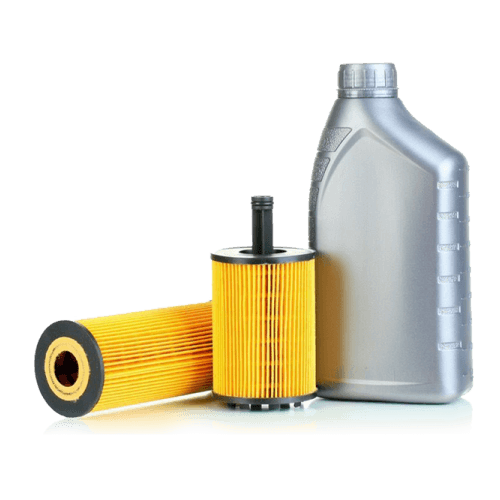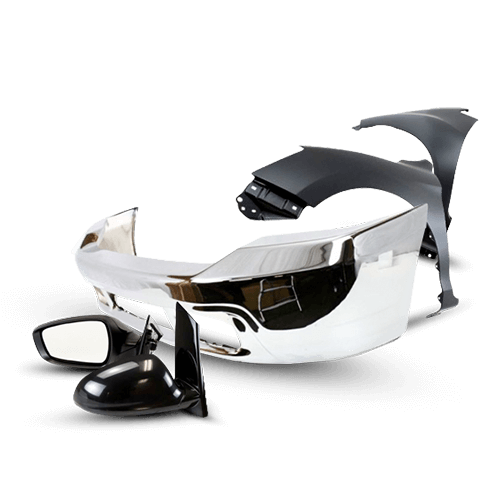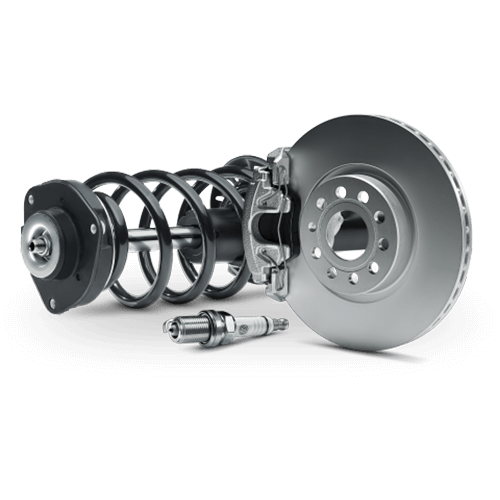
How to Check Suspension on Car and Know When to Replace It
Your vehicle's suspension system is one of the most critical components affecting both safety and comfort on the road. Understanding how to check suspension on car components can save you from costly repairs, prevent dangerous driving situations, and ensure your vehicle maintains optimal performance. Many drivers overlook suspension maintenance until problems become severe, but regular inspection can help identify issues early when they're more affordable and less dangerous to address.
Modern suspension systems are complex assemblies designed to absorb road impacts, maintain tire contact with the pavement, and provide stable handling characteristics. When these systems begin to fail, the consequences extend far beyond uncomfortable rides – compromised suspension affects braking distances, steering precision, and overall vehicle control. Learning to recognize the warning signs and perform basic inspections empowers car owners to make informed decisions about maintenance and repairs.
Understanding Car Suspension Systems and Their Critical Functions
What does the suspension do in a car extends far beyond simply providing a smooth ride. The suspension system serves as the crucial link between your vehicle's body and wheels, managing the complex forces generated during acceleration, braking, and cornering. This sophisticated network of components works continuously to maintain vehicle stability while absorbing the countless impacts from road irregularities, potholes, and surface variations.
The primary functions of car suspension include controlling wheel movement, supporting vehicle weight, and maintaining proper tire contact with the road surface. When you encounter a bump, the suspension compresses to absorb the impact energy, preventing it from transferring directly to the passenger compartment. Simultaneously, the system manages the rebound motion to prevent excessive bouncing that would compromise vehicle control.
What is car suspension mean in terms of safety cannot be overstated. A properly functioning suspension system ensures predictable vehicle behavior during emergency maneuvers, maintains consistent braking performance, and prevents premature tire wear. The system also plays a crucial role in load distribution, ensuring that vehicle weight remains properly balanced across all four wheels regardless of road conditions or driving situations.
Understanding whats a car suspension involves recognizing its major components: springs (coil, leaf, or air), shock absorbers or struts, control arms, bushings, and various linkages. Each component has specific functions, and failure of any single element can compromise the entire system's performance. Springs support the vehicle's weight and absorb initial impacts, while shock absorbers control spring oscillations and dampen unwanted movements.

Suspension Component Specifications and Expected Lifespan
How long does car suspension last depends on multiple factors including driving conditions, maintenance practices, vehicle type, and component quality. Generally, most suspension components have service intervals ranging from 50,000 to 100,000 miles, though some elements may require attention sooner under severe operating conditions.
Shock absorbers and struts typically require replacement every 50,000 to 90,000 miles, depending on driving habits and road conditions. These components gradually lose their damping effectiveness, though the deterioration occurs slowly enough that drivers often don't notice the gradual performance decline. Professional mechanics recommend testing shock absorber performance every 40,000 miles to establish baseline measurements and track degradation rates.
Springs generally outlast shock absorbers, often maintaining acceptable performance for 80,000 to 120,000 miles. However, springs can fail catastrophically without warning, making regular visual inspections particularly important. Coil springs may develop cracks or breaks, while leaf springs can suffer from individual leaf separation or mounting point failures.
Bushings and rubber components typically show wear signs earlier than metal parts, often requiring replacement every 60,000 to 80,000 miles. These seemingly minor components play crucial roles in suspension geometry and noise control. Deteriorated bushings allow excessive movement that can create handling problems and accelerate wear in more expensive components.
Ball joints and control arm assemblies vary significantly in longevity depending on design and operating conditions. Some vehicles feature serviceable ball joints that can be replaced individually, while others require complete control arm replacement when joints fail. Expected service life ranges from 70,000 to 150,000 miles, with regular lubrication extending component life where applicable.
Manufacturer inspection intervals typically recommend suspension system evaluation every 12,000 to 15,000 miles during routine service appointments. However, drivers operating in severe conditions – including frequent highway driving, urban stop-and-go traffic, or rough road surfaces – should consider more frequent inspections to identify problems before they compromise safety or lead to costly secondary damage.

Comprehensive Step-by-Step Suspension Inspection Procedure
Learning how to check suspension on car systems requires systematic approach and attention to detail. Begin your inspection with the vehicle parked on level ground, engine off, and parking brake engaged. This initial assessment focuses on visual indicators and basic functionality tests that don't require specialized tools or lifting equipment.
Visual Inspection Process:
• Walk around the vehicle and observe overall stance, looking for any corner that sits lower than others, which may indicate spring or strut failure
• Examine each wheel well for signs of oil or fluid leakage on shock absorbers or struts
• Check for physical damage including bent components, cracked springs, or separated rubber bushings
• Look for excessive rust or corrosion that might compromise component integrity
• Inspect tire wear patterns, as uneven wear often indicates suspension geometry problems
Physical Testing Procedures:
• Perform the bounce test by pressing firmly on each corner of the vehicle and releasing quickly
• Count the number of bounces after release – properly functioning suspension should stabilize within one to two oscillations
• Excessive bouncing or continued movement indicates worn shock absorbers or struts
• Test each corner individually, as suspension components can fail independently
Interior Assessment Indicators:
• Start the engine and turn the steering wheel from lock to lock while stationary, listening for grinding, clicking, or groaning sounds
• Drive the vehicle slowly over speed bumps or parking lot irregularities, noting any excessive noise or harsh impacts
• Evaluate steering response and vehicle stability during normal driving conditions
• Monitor for steering wheel vibration or wandering that might indicate suspension problems
Advanced Inspection Techniques:
For more thorough evaluation, safely lift the vehicle using appropriate jack stands and examine suspension components from underneath. Look for worn bushings, which often appear cracked, torn, or separated from their metal housings. Check ball joint condition by grasping the tire at the top and bottom positions and attempting to rock it – excessive movement indicates joint wear.
Inspect shock absorber and strut mounting points for proper attachment and signs of stress or failure. Many suspension problems originate from failed mounting hardware rather than the primary components themselves. Pay particular attention to rubber isolation mounts, which can deteriorate and cause noise or vibration problems even when the main components function properly.

Cost Analysis: Professional Service Versus DIY Approaches
Understanding how much to replace suspension on car systems requires considering multiple factors including component costs, labor rates, and complexity of required work. Suspension repair costs vary dramatically depending on which components need replacement, vehicle complexity, and regional labor rates.
Basic shock absorber replacement typically costs between $300 and $800 per axle when performed professionally, including parts and labor. However, how much to fix suspension on car problems can escalate quickly when multiple components require attention simultaneously. Complete suspension overhauls involving springs, struts, and related hardware often range from $1,500 to $4,000 depending on vehicle type and component quality.
DIY approaches can significantly reduce costs for mechanically inclined individuals with appropriate tools and workspace. Shock absorber replacement often requires minimal specialized equipment, though proper safety procedures and torque specifications remain critical. However, more complex procedures involving spring compression or alignment-sensitive components typically require professional equipment and expertise.
How much to fix car suspension becomes more predictable when problems are addressed early rather than allowed to progress. For example, replacing worn bushings might cost $200 to $400, while delaying replacement until excessive movement damages other components could result in repair bills exceeding $1,500. This reality makes regular inspection and proactive maintenance financially advantageous for most vehicle owners.
Labor costs represent a significant portion of suspension repair expenses, often accounting for 50% to 70% of total project costs. Professional technicians possess specialized tools, alignment equipment, and expertise that ensure proper installation and adjustment. Many suspension repairs also require wheel alignment services, adding $80 to $150 to the total cost.
Component quality significantly affects both initial costs and long-term reliability. Original equipment manufacturer parts typically cost more than aftermarket alternatives but often provide better fit, finish, and longevity. In my experience, higher-quality components justify their premium pricing through extended service life and improved performance characteristics.
Complementary Maintenance and Related System Care
Suspension system health interconnects closely with other vehicle systems, making comprehensive maintenance approaches more effective than isolated component service. Tire condition and inflation pressure directly affect suspension loading and wear rates, while steering system health influences suspension component stress levels.
Regular tire rotation and proper inflation pressure maintenance extend both tire life and reduce suspension system loading. Under-inflated tires increase rolling resistance and heat generation while creating additional stress on suspension components. Many mechanics report that customers who maintain proper tire pressure experience significantly longer suspension component life.
Wheel bearing maintenance affects suspension performance and should be evaluated during routine suspension inspections. Worn wheel bearings create additional play in the suspension system and can mask symptoms of other component wear. Regular bearing inspection and lubrication, where applicable, contribute to overall system reliability.
Power steering system health influences suspension loading, particularly during low-speed maneuvering and parking situations. Proper power steering fluid levels and condition reduce the effort required for steering input, which decreases stress on suspension components and mounting points.
For comprehensive suspension system care, consider exploring quality replacement parts and accessories at kit.bestparts.ca suspension collection, where professional-grade components ensure reliable performance and extended service life.
Frequently Asked Questions About Car Suspension Systems
How often should I check my car's suspension?
What does suspension do for a car makes regular inspection particularly important for safety and performance. Most automotive experts recommend visual suspension inspection every 6,000 to 8,000 miles during routine oil changes, with more comprehensive evaluation every 15,000 to 20,000 miles. However, drivers who frequently encounter rough roads, carry heavy loads, or notice any performance changes should inspect their suspension more frequently.
What are the most common signs that my suspension needs repair?
The most reliable indicators include excessive bouncing after hitting bumps, uneven tire wear patterns, pulling to one side during driving, and visible fluid leaks around shock absorbers or struts. Additionally, increased road noise, harsh ride quality, and difficulty controlling the vehicle during turns or braking often signal suspension problems requiring professional attention.
Can I drive with worn suspension components?
While vehicles with moderately worn suspension components may remain drivable, compromised suspension significantly affects safety margins during emergency situations. Worn suspension increases stopping distances, reduces handling precision, and can lead to loss of control during evasive maneuvers. Professional evaluation becomes essential when any suspension symptoms are noticed.
How much does it typically cost to replace car suspension?
How much to fix car suspension varies widely based on vehicle type and component requirements. Basic shock absorber replacement might cost $400 to $800 per axle, while complete suspension overhauls can range from $1,500 to $4,000 or more. Early detection and proactive replacement of individual components typically costs less than waiting for multiple component failures.
Maintaining Optimal Suspension Performance Through Proactive Care
Successful suspension maintenance requires combining regular inspection with proactive component replacement based on mileage intervals and performance indicators. Understanding what is car suspension mean in terms of vehicle safety and performance helps drivers prioritize this often-overlooked maintenance area and make informed decisions about service timing.
The interconnected nature of suspension systems means that early intervention typically provides better value than reactive repairs. By learning how to check suspension on car components and recognizing warning signs, vehicle owners can address problems before they compromise safety or lead to expensive secondary damage. Regular maintenance not only ensures optimal performance but also preserves the significant investment represented by modern vehicle suspension systems.
Professional diagnosis becomes valuable when multiple symptoms are present or when inspection reveals potential problems requiring expert evaluation. Qualified technicians possess specialized tools and experience necessary for accurate problem identification and proper repair procedures, ensuring that suspension systems continue providing safe, reliable performance.
Take Action to Protect Your Vehicle and Investment
Don't wait for suspension problems to compromise your safety or create expensive repair situations. Begin implementing regular inspection procedures today, and establish relationships with qualified service providers who understand modern suspension systems and their maintenance requirements.
For professional-grade suspension components and expert technical support, explore the comprehensive selection available through quality automotive suppliers. Investing in proper maintenance and high-quality replacement parts ensures continued vehicle safety, performance, and reliability for years to come.






















































